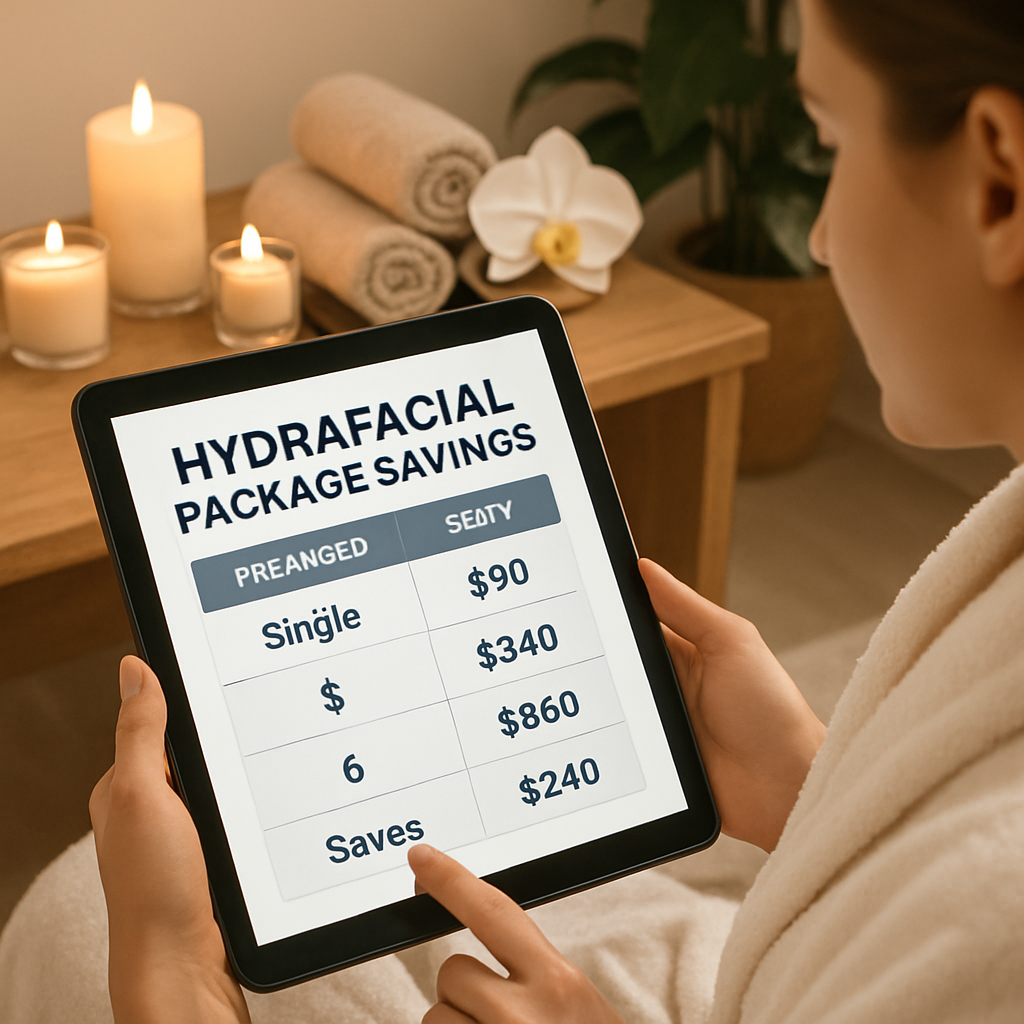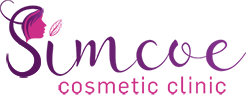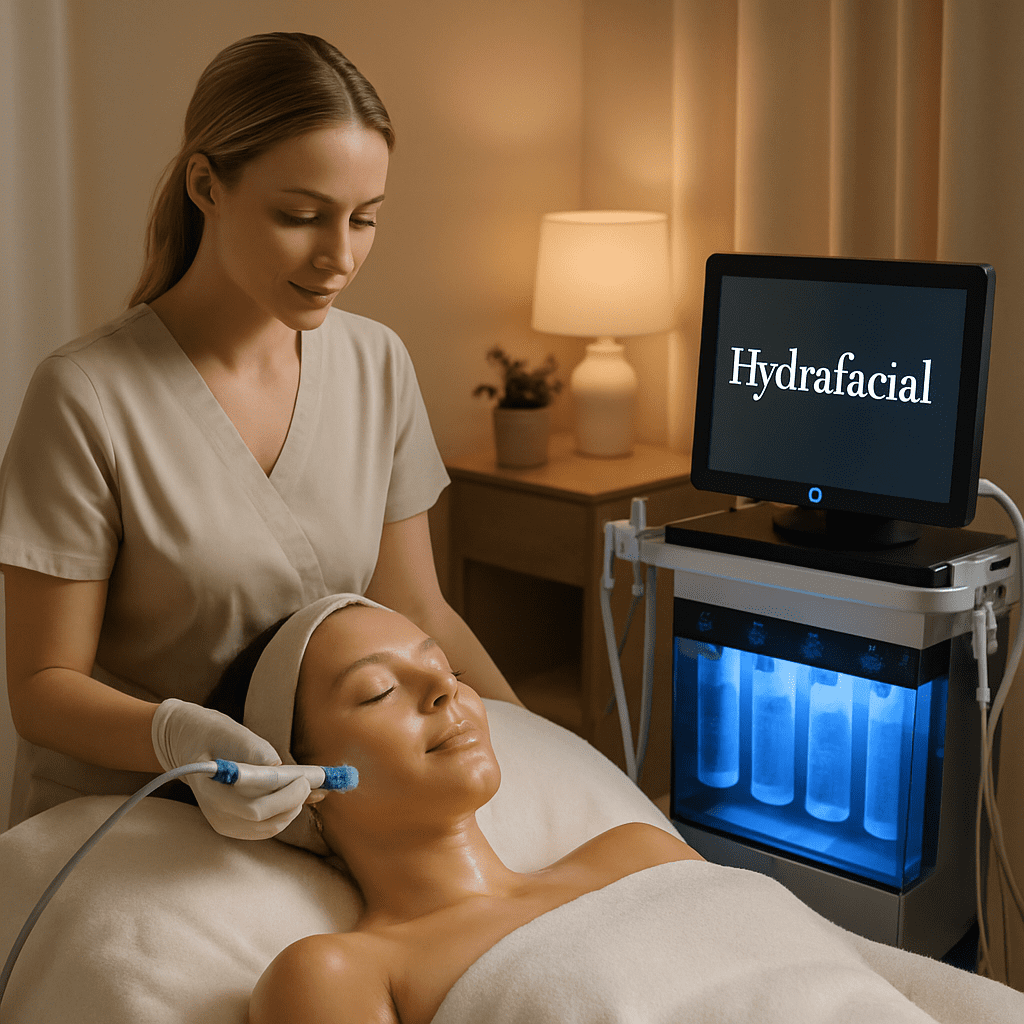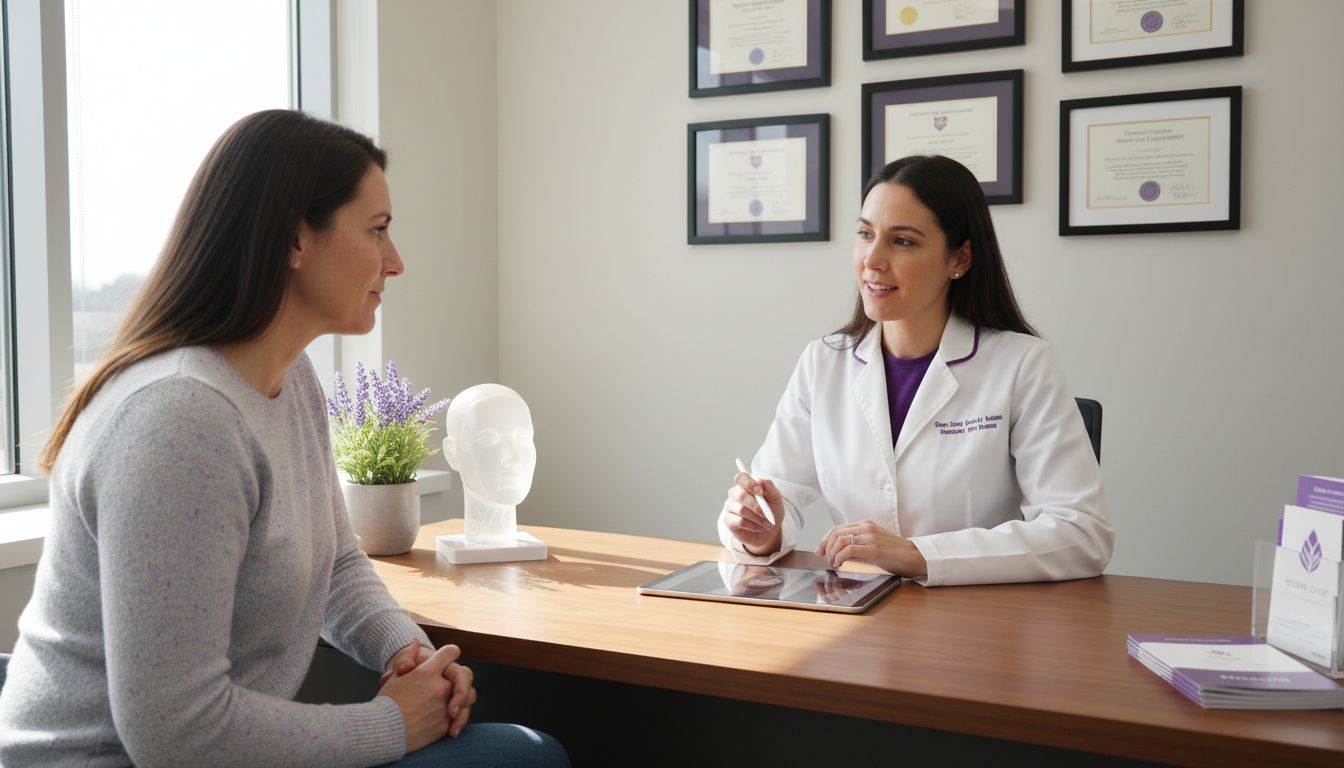Ever stared at the price tag on a Hydrafacial and felt that pang of uncertainty? You’re not alone—most of us wonder if the glow is worth the price.
That moment of hesitation is the exact feeling we’ll unpack today, because understanding hydrafacial cost isn’t just about numbers; it’s about knowing what you actually get for every dollar.
Think about it this way: a single session can range from a modest $150 to a premium $350, depending on where you live, the clinic’s reputation, and the extra boosters you add.
And that’s where the rubber meets the road—do you need the basic 5‑step cleanse, exfoliation, extraction, hydration, and protection, or are you eyeing the deluxe upgrades like LED therapy or lymphatic drainage?
I’ve spoken with clients who walked out after their first treatment feeling like they’d just invested in a mini‑spa day—something they could actually see in the mirror the next morning.
But here’s the kicker: the real value comes from consistency. A one‑off session might smooth a few fine lines, yet a series of three to six treatments—often the sweet spot for lasting radiance—spreads the cost over time and maximizes results.
So, what should you keep an eye on when you sit down with a consultant at Simcoe Cosmetic Clinic? First, ask for a detailed breakdown—base treatment, any serums, and post‑care products. Second, see if they offer package discounts; many medspas reward loyalty with 10‑15% off when you book a bundle.
By the end of this guide you’ll know exactly how to read the price, what extras are truly worth it, and how to plan a budget that leaves you looking refreshed—not broke.
Ready to take the guesswork out of hydrafacial cost and feel confident about your skin investment? Grab a pen, jot down these key questions, and let’s walk through the numbers together so you can decide with peace of mind.
TL;DR
If you’re wondering whether a Hydrafacial is worth the price, this guide breaks down the hydrafacial cost, what you actually get, and how to stretch your budget for lasting glow.
We’ll show you the key questions to ask, the real‑world price ranges in Simcoe, and simple tips to maximize results without breaking the bank.
Understanding Hydrafacial Pricing Factors
When you first see a Hydrafacial price tag, it can feel like decoding a secret code. Is it just the five‑step cleanse, or are there hidden layers that push the cost higher? Let’s pull back the curtain and walk through every piece that shapes the hydrafacial cost.
Base treatment price
The core Hydrafacial—cleanse, exfoliate, extract, hydrate, and protect—usually lands between $150 and $300 per session. That range shows up in most U.S. clinics, including the data from Beverly Hills Med Spa’s pricing guide. In Simcoe, the same baseline applies, but local market dynamics can shift the number up or down a bit.
So why that spread? Think of it like buying a coffee. A basic drip brew costs less than a handcrafted latte with oat milk and a sprinkle of cinnamon. The same principle applies to skin care: the basic formula is affordable, but the extras add flavor—and price.
Boosters and custom serums
Most people start wondering about those “add‑ons”: brightening vitamin C, anti‑age peptides, or acne‑fighting salicylic acid. Each booster is a single‑use serum that targets a specific concern, and they typically add $30‑$80 per vial. The PSC Atlanta article notes that “the biggest influence on what you will pay for the service is the use of special serums and boosters” according to their cost breakdown. If you’re chasing a glow‑up for a wedding, those extras feel essential; if you’re just maintaining, you might skip them.
Here’s a quick mental checklist: do you need brightening, hydration, or acne control? Pinpoint the goal, then ask the clinic which booster hits that mark without over‑loading your budget.
Location, reputation, and provider expertise
Clinic location matters. A high‑traffic downtown medspa with a celebrity clientele often commands a premium, while a neighborhood clinic with seasoned nurses might be more modest. Provider experience is another hidden cost driver—more experienced clinicians can deliver better results, which many clients deem worth the extra dollars.
And don’t forget the “facility fee.” Some medspas bundle the equipment depreciation, premium linens, and post‑treatment refreshments into the price. That’s why two clinics can quote $180 versus $250 for what feels like the same service.
Frequency, packages, and financing
One session gives you an instant glow, but lasting results usually need a series—three to six visits spaced a month apart. Buying a package often shaves 10‑15% off the per‑session cost. Ask your consultant about “bundle discounts” or “membership plans” that spread the expense over time.
Financing options are also common. Some clinics offer zero‑interest payment plans, turning a $300 session into manageable monthly installments. That can make the hydrafacial cost feel less like a splurge and more like an investment in daily confidence.
Does the math still feel fuzzy? Grab a pen and write down three columns: base price, boosters you want, and any package discount. When the numbers line up, you’ll see exactly where each dollar goes.
Curious how Hydrafacial stacks up against other facial tech? Our Hydrafacial vs Microdermabrasion guide breaks down the pros, cons, and cost differentials, helping you decide if the extra spend is justified for your skin goals.
Remember, the right price is the one that matches your skin goals and your wallet comfort.

Average Hydrafacial Cost by Region
When you start comparing Hydrafacial prices across Canada, it quickly feels like you’re reading a different currency for each province. That’s because the hydrafacial cost is shaped by local rent, taxes, and the concentration of medspa specialists.
Ontario – The baseline
In the Greater Toronto Area and nearby Simcoe, you’ll typically see a basic session priced between $150 and $300. The range mirrors what Coolspa reports for major U.S. metros, and it reflects the high‑end equipment they use and the licensing fees that Ontario practitioners must cover.
For example, a 32‑year‑old client in Barrie booked a single Hydrafacial for $185, added a vitamin C booster for $45, and left with a “glow that lasted a week.” She later bought a six‑session package and saved roughly 12% off the per‑visit price.
British Columbia – West Coast premium
Vancouver’s cost of living pushes the hydrafacial cost up a notch. Expect $200‑$350 for the core treatment, with boosters adding $40‑$90 each. The higher price often includes a complimentary post‑treatment skincare kit, which can be a nice value‑add if you’re new to the process.
One real‑world example: a tech executive in Burnaby paid $325 for a deluxe Hydrafacial that bundled LED light therapy and lymphatic drainage. She said the extra $75 felt worth it because the session reduced facial puffiness before a big conference.
Alberta – A middle ground
Calgary and Edmonton sit somewhere between Ontario and BC. The average base price hovers around $170‑$280, with boosters sitting near $35‑$70. Many clinics in Alberta run “first‑time‑client” promos—$20 off the first session or a free serum upgrade.
Take the case of a 45‑year‑old dad in Calgary who combined a Hydrafacial with a collagen‑boosting peptide. He paid $240 total and reported that his skin felt “plumped” for the next ten days, enough to skip a shave on the weekend.
Atlantic provinces – The budget‑friendly option
In Nova Scotia and New Brunswick, the hydrafacial cost often dips below $150 for the basic version, especially in smaller towns where rent is lower. However, the trade‑off can be fewer customization options and a shorter post‑treatment recovery lounge.
Sarah, a college student in Halifax, booked a $130 session and was surprised by how gentle it felt. She added a $30 acne‑focused booster and left with clearer pores—proof that even the lower‑priced tiers can deliver solid results.
Actionable checklist for your regional hunt
- Write down the base price you hear for a standard Hydrafacial in your city.
- Ask for a list of boosters and their individual costs—most range $30‑$80.
- Inquire about package discounts (3‑session, 6‑session) and calculate the per‑visit savings.
- Check if the clinic includes any “extras” (post‑treatment serum, complimentary skin analysis) that offset a higher headline price.
- Compare at least three providers in your area before you commit.
Remember, the lowest price isn’t always the best value. A clinic that charges $250 per session but offers a thorough consultation, high‑quality serums, and a comfortable recovery lounge can end up costing you less in the long run because you’ll need fewer follow‑up visits.
If you’re still unsure which region offers the sweet spot for your budget, read how Coolspa breaks down cost factors across major markets and use that as a benchmark. Then, see how Essence Medispa frames pricing by location and provider expertise for additional perspective.
Bottom line: map your local price, add the booster costs you truly need, and negotiate a package that aligns with the results you’re after. With a clear spreadsheet in hand, the hydrafacial cost becomes a transparent investment in your skin—not a mystery charge.
Hydrafacial vs Other Facials: Cost Comparison
When you start looking at the hydrafacial cost, it’s easy to feel like you’re comparing apples to oranges. A microdermabrasion session, a chemical peel, even a classic spa facial – they all promise brighter skin, but the price tags and what you actually get can be worlds apart.
So, what should you keep an eye on? First, think about the core steps. A Hydrafacial bundles four actions – cleanse, exfoliate, extract, and hydrate – into a single, water‑based vortex. A microdermabrasion session sandes the surface with a gritty tip, then suctions away debris. A chemical peel uses acids to slough off the top layer, and a classic facial usually sticks to cleansing and massage.
Because those steps differ, the price spreads do too. Most clinics quote a base range of $150‑$300 for a Hydrafacial, which lines up with many microdermabrasion prices, but you often get more “bang for your buck” in half the time. Healthysolutions Medspa notes that Hydrafacial can be done in half the time while offering similar cost, and the extra serum infusion means fewer follow‑up visits.
By contrast, a standard chemical peel can start as low as $80 for a superficial peel, but deeper peels climb to $500‑$950, especially if you add a post‑peel regimen. Those higher‑end peels may deliver more dramatic results, yet they also bring downtime – something Hydrafacial sidesteps entirely.
Here’s a quick snapshot to help you visualise the differences. The table breaks down the typical price range, treatment length, and whether you can expect downtime.
| Facial Type | Typical Cost (CAD) | Session Length | Downtime? |
|---|---|---|---|
| Hydrafacial (base) | $150‑$300 | 30‑45 min | No |
| Microdermabrasion | $120‑$250 | 45‑60 min | Minimal (redness 1‑2 hrs) |
| Chemical Peel (superficial) | $80‑$150 | 30‑40 min | Yes (peeling 2‑5 days) |
Notice how the Hydrafacial sits right in the middle of cost but tops the chart for convenience. If you’re juggling work, school, or a busy family schedule, that 30‑minute, no‑downtime slot can feel priceless.
Now, let’s talk boosters. Adding a vitamin C or peptide booster to a Hydrafacial usually tacks on $30‑$80 per vial. That’s a modest bump compared to a chemical peel that might require a separate after‑care kit costing $100‑$200. London Premier Laser’s pricing guide shows Hydrafacial packages starting at $126 for a full six‑step treatment, which often includes a basic booster.
What about long‑term value? Think of it like this: you could spend $250 on a single Hydrafacial and feel radiant for a week, then book another in four weeks. Or you could drop $500 on a medium‑depth chemical peel, endure a few days of flaking, and hope the glow lasts a month. The math isn’t just about the headline price; it’s about how many visits you’ll need to keep your skin where you want it.
One tip that trips up many shoppers: don’t forget the “extras” that clinics bundle in. Some medspas throw in a post‑treatment serum, a complimentary skin analysis, or a soothing lounge experience. Those perks can offset a higher base price and actually lower your overall cost per result.
Bottom line: when you line up the numbers, the Hydrafacial often emerges as the most balanced option – reasonable price, short appointment, no downtime, and the ability to customise with boosters without blowing your budget.
Ready to decide? Grab a notebook, jot down the base price each local clinic quotes, add the cost of any boosters you truly need, and factor in any bundled perks. Compare that total against the microdermabrasion and peel options you’ve researched, and you’ll have a clear picture of which treatment gives you the best value for your hard‑earned money.
How to Reduce Hydrafacial Cost
Feeling the pinch of the Hydrafacial price tag? You’re not alone—many of us watch the cost flicker on the screen and wonder if we’ll ever afford that glow.
Good news: the cost isn’t set in stone. With a few smart moves you can shave off $50‑$150 without sacrificing results.
Here’s a step‑by‑step playbook we use at Simcoe Cosmetic Clinic, and it works for anyone chasing smoother skin on a budget.
1. Know Your Baseline
Start by writing down the exact base price your favorite medspa quotes. In our region that usually lands between $150 and $300 per session, which matches the national range highlighted by a recent budgeting guide.
Write it in a spreadsheet, then add any boosters you actually need—vitamin C, peptide, or acne serums. Each add‑on typically adds $30‑$80, so you instantly see how those extras balloon the final bill.
2. Ask About Packages
Clinics love to reward repeat visits, so ask if they have 3‑, 6‑, or even 12‑session packages. A 6‑session bundle can shave roughly 10‑15% off the per‑visit cost, which adds up fast.
Don’t be shy—mention that you’ve compared quotes from three local providers. Most places will match or beat a competitor’s package price just to win your business.
3. Leverage Off‑Peak Discounts
Many medspas offer lower rates for appointments booked on weekdays or during slower afternoon slots. It feels a bit like snagging a happy‑hour deal, but for your skin.
Give the front desk a quick call and ask, “Do you have any off‑peak specials this month?” You’ll be surprised how often the answer is a yes.
4. Choose the Right Boosters
Not every booster is essential. If your main goal is hydration, stick with the basic antioxidant serum—skip the pricey peptide unless you’re targeting deep lines.
Ask the clinician to show you a cost‑benefit breakdown. Sometimes a single serum can replace a whole follow‑up session, saving you both time and money.
5. Explore Membership or Financing Options
A few clinics run monthly membership plans that include one Hydrafacial plus two booster upgrades for a flat fee. That can lock in a rate below the standard per‑visit price.
If a membership isn’t on the table, ask about financing. Some providers partner with credit companies to offer 0% interest over 3‑6 months—perfect for spreading out the cost without extra fees.
6. Use Gift Cards or Referral Perks
Keep an eye on seasonal promotions where clinics sell $200 worth of treatments for $180 in gift‑card form. Even if you don’t use it all, the saved $20 reduces your overall Hydrafacial cost.

Ask if they have a referral program—many medspas give both you and a friend a $25 credit after their first visit. It’s a win‑win that chips away at the price.
Put it all together: grab a notebook, list the base price, add the boosters you truly need, calculate package discounts, check off‑peak rates, and stack any membership or gift‑card savings. When you see the total, you’ll often find the Hydrafacial cost drops well below the headline range, making that radiant skin feel like a smart investment rather than a splurge.
Ready to start saving? Contact Simcoe Cosmetic Clinic today for a personalized quote and let us help you map out the most budget‑friendly Hydrafacial plan.
What’s Included in Hydrafacial Packages
When you stare at a price sheet, the first thing you’ll notice is a list of line items that look like a mini‑menu. That’s because a Hydrafacial package isn’t just “one treatment” – it’s a bundle of core steps, optional boosters, and often a few perks that clinics toss in to sweeten the deal.
Core Treatment Steps
Every Hydrafacial starts with the same seven‑step engine: cleanse, exfoliate, peel, extract, hydrate, and protect. In practice, the clinician uses a vortex‑fusion tip that literally whirls serums into your skin, so you get a deep clean and an instant glow in under 30 minutes. The base cost you saw earlier ($150‑$300) covers these core actions, and it’s the same whether you’re in Simcoe or a big‑city spa.
Because the core is standardized, you can compare apples to apples across providers. If you ask a clinic to break down the price, they should be able to tell you exactly how much of that figure is the “core Hydrafacial” and how much is added on.
Boosters & Add‑Ons
Boosters are where the price can jump from $30 to $80 per vial, but they’re also where you get real customization. The official Hydrafacial booster catalog lists options like a peptide‑rich “Age‑Correcting” serum, a Vitamin C brightening complex, and a “Dermal‑Boost” hyaluronic acid blend that plumps fine lines. Each booster contains concentrated actives designed to target a specific concern — and the Hydrafacial website explains the science behind each formula.
Here’s a quick snapshot of three popular boosters and what they add to your treatment:
- Vitamin C Complex: stabilised L‑ascorbic acid that brightens and reduces hyperpigmentation.
- Peptide Booster: nine‑peptide blend that supports collagen and improves elasticity.
- Hydration Booster (Hyaluronic Acid + Polyglutamic Acid): locks in moisture for a plumper, smoother texture.
Real‑world example: Sarah, a 42‑year‑old client with post‑acne scarring, added the Vitamin C booster and saw a noticeable fade in dark spots after just two sessions. Without the booster, she’d have needed an extra chemical peel, which would have added both cost and downtime.
Package Structures
Clinics usually offer three flavors of packages:
- Starter Pack (3‑session): roughly a 5‑10% discount per visit, perfect for testing different boosters.
- Maintenance Pack (6‑session): saves 10‑15% and often includes a complimentary booster of your choice.
- Transformation Pack (12‑session): the biggest markdown (up to 20%) plus perks like priority booking or a free post‑treatment skin analysis.
A recent Healthline analysis shows that six‑session bundles typically shave 12‑15% off the per‑visit price, aligning with what most Ontario medspas report.
What’s clever about these bundles is that the per‑session cost drops, but the total out‑of‑pocket amount is still predictable. That transparency helps you budget the “hydrafacial cost” over a year instead of guessing month to month.
How to Evaluate What You Need
Step 1 — Write down the base price the clinic quoted you. Step 2 — List the skin concerns you want to tackle (e.g., dryness, fine lines, uneven tone). Step 3 — Match each concern to a booster from the catalog. Step 4 — Add the booster cost to the base price and see how it fits into your chosen package discount.
For a quick sanity check, use this simple formula:
Total Package Cost = (Base Hydrafacial × Number of Sessions) + (Booster Cost × Number of Sessions) – Package Discount
If the math still feels high, ask the clinic if they can swap a pricey booster for a “dual‑action” serum that covers two concerns at once. Many medspas are happy to customize because they want you to stay long‑term.
Pro tip: ask whether the package includes a complimentary post‑treatment serum to use at home. That small addition can shave $20‑$30 off the next booster you’d otherwise buy.
Finally, remember that the “hydrafacial cost” isn’t just a number on a receipt; it’s an investment in the layers of your skin. By dissecting the package—core steps, boosters, discounts—you’ll walk into the clinic armed with clarity, and you’ll leave feeling like you got a genuine value, not just a price tag.
Financing and Payment Options for Hydrafacial
We’ve broken down the price, now let’s talk about how you actually pay it. The good news? Most medspas, including Simcoe Cosmetic Clinic, understand that a glowing complexion shouldn’t feel like a credit‑card nightmare.
Traditional payment methods
Cash, debit or credit cards are the baseline. If you swipe a Visa, expect the clinic to apply the same tax rate you see on the quote. Some places even throw in a 5 % discount for cash‑only payments – a little “thank you” for keeping the transaction simple.
But what if the total still feels steep?
Membership plans
Think of a membership as a subscription to softer skin. At Simcoe you can enroll in a monthly plan that bundles one Hydrafacial plus two booster upgrades for a flat fee, often 10‑15 % lower than the à‑la‑carte rate. The fee is charged automatically, so you never have to remember to book.
Real‑world example: Jenna, 38, signed up for a six‑month membership. Her monthly bill was $120 instead of $150 per session, saving her $180 over the term. Plus she got a complimentary post‑treatment serum that would have cost $30 on its own.
Zero‑interest financing
Many clinics partner with financing companies that let you split the cost into 3, 6 or even 12 equal payments with 0 % interest. The key is to read the fine print – look for “no hidden fees” language and confirm the total you’ll pay matches the quoted Hydrafacial cost.
According to Hydrafacial’s official financing page, flexible financing options are available for practices of any size, meaning the same offers often trickle down to patients.
Here’s a quick checklist before you sign:
- Is the interest truly 0 %?
- Are there pre‑payment penalties?
- Does the provider charge an activation fee?
Gift cards and promotional credits
Seasonal gift‑card sales are a sneaky way to lower the effective Hydrafacial cost. A clinic might sell a $250 card for $225 – you instantly pocket $25. Stack that with a referral credit (usually $25 – $50) and you’ve shaved a decent chunk off the bill.
Mike, a 45‑year‑old dad, bought a $300 gift card during a holiday sale and used it for three sessions. He ended up paying only $250 total, which is roughly a 16 % discount.
Insurance and health‑savings accounts
While Hydrafacial is cosmetic, some health‑savings accounts (HSAs) or flexible‑spending accounts (FSAs) allow you to use pre‑tax dollars for the treatment. Check with your employer’s benefits portal – you might be able to reimburse yourself later without touching your regular budget. You can verify the rules in IRS Publication 969, which outlines qualified medical expenses.
Actionable steps to lock in the best deal
1. Call the clinic and ask straight, “Do you offer any financing or membership plans?”
2. Request a written breakdown that shows the total cost with and without the plan.
3. Compare that number to the standard per‑session price you gathered earlier.
4. If you’re considering 0 % financing, ask for the contract and verify the “no‑interest” clause.
5. Look for upcoming holidays or “new‑client” weeks – that’s when gift‑card discounts pop up.
6. Finally, write down the monthly amount you’re comfortable paying and match it against the plan options. If it feels too high, negotiate for a lower‑cost booster or a shorter package.
Bottom line: the Hydrafacial cost isn’t set in stone. By mixing memberships, zero‑interest financing, and smart promotions, you can turn a $300‑plus session into a manageable monthly habit.
FAQ
What is the typical hydrafacial cost in Simcoe?
The base price you’ll see on a quote usually lands between $150 and $300 per session. That range covers the core seven‑step treatment, but it doesn’t include boosters, membership fees, or any seasonal promos. In practice most clients at Simcoe Cosmetic Clinic end up paying around $200‑$250 after they snag a discount or bundle.
Do my health‑savings accounts (HSA/FSA) cover hydrafacial cost?
Even though a hydrafacial is cosmetic, many HSA or FSA plans treat it as a qualified skin‑care expense when a physician writes a note for a medical condition like severe acne or rosacea. You’ll need to submit the clinic’s itemised receipt and the doctor’s recommendation. If the paperwork checks out, the account reimburses you tax‑free, effectively lowering the out‑of‑pocket hydrafacial cost.
Can I spread the hydrafacial cost over several months?
Yes – most medspas partner with zero‑interest financing companies that let you split the bill into 3, 6 or 12 equal payments. Just make sure the “0 % interest” clause really means no hidden fees and that you can pre‑pay without penalty. When you compare the monthly amount to your budget, you’ll see if the plan feels comfortable or if a membership might be cheaper.
Are there any hidden fees I should watch out for?
Sometimes clinics tack on activation fees for financing, or a “service charge” for gift‑card purchases. Also ask whether the quoted price includes tax – a few places quote a pre‑tax amount and then add 13 % HST at checkout. Asking for a written breakdown eliminates surprises and keeps the hydrafacial cost transparent.
How do membership plans affect the overall hydrafacial cost?
A membership usually bundles one core treatment plus two booster upgrades for a flat monthly fee that’s 10‑15 % lower than buying each session à la carte. For example, a $120/month membership might replace a $150 per‑visit price, saving you $180 over six months. Plus you often get a complimentary post‑treatment serum that would otherwise cost $30‑$40.
What’s the best time of year to lock in a lower hydrafacial cost?
Look for “new‑client” weeks, holiday gift‑card sales, or summer skin‑refresh promotions. Clinics love to move inventory around holidays, so a $250 gift card might be sold for $225, instantly giving you a 10 % discount. Stack that with a referral credit and you could shave another $20‑$30 off the total.
Should I buy a package or pay per session for better value?
If you’re certain you’ll commit to regular treatments, a package is usually the smarter move – the per‑session price drops 5‑20 % depending on the bundle size. However, if you’re just testing boosters or unsure about frequency, paying per session lets you stay flexible without locking money into a long‑term contract. Write down your expected number of visits, multiply by the base price, then compare that figure to the package total; the cheaper option will jump out.
Conclusion
So you’ve walked through the numbers, the memberships, the financing tricks – and now the big question is: does the hydrafacial cost feel right for you?
Honestly, the answer is personal. If you can picture yourself glowing after each session, and the math shows a clear saving versus à‑la‑carte visits, that’s a good sign. If the price still makes you wince, remember there are always seasonal promos, gift‑card discounts, or a leaner booster combo that can shave another 5‑10 % off.
Here’s a quick sanity check: write down the total you’d pay with a membership, then subtract any freebies (like that post‑treatment serum). Compare that to the cash‑only price you’d pay today. The lower number wins, as long as the plan fits your schedule.
And don’t forget the intangible benefit – confidence. Many of our clients tell us that the boost in self‑esteem is worth every penny.
What’s next? Grab your phone, call Simcoe Cosmetic Clinic, and ask for a written breakdown of the current hydrafacial cost options. Ask if they have a “new‑client” week coming up – you might lock in a better deal than you expected.
Bottom line: the hydrafacial cost isn’t a fixed wall; it’s a flexible puzzle you can solve with a bit of research and a friendly chat.




